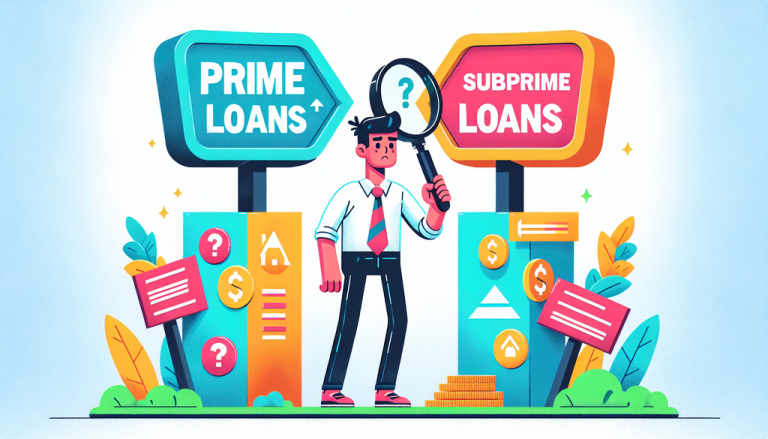Navigating the complex landscape of lending can feel like walking through a financial maze. Many borrowers find themselves puzzled by the intricate differences between prime and subprime loans, wondering how these classifications impact their financial opportunities.
Understanding Loan Classifications
The world of lending isn’t a one-size-fits-all scenario. Prime and subprime loans represent two distinct pathways in the credit universe, each with unique characteristics, risks, and potential outcomes for borrowers.
Prime Loans: The Golden Standard
Prime loans are the credit market’s VIP experience. These loans are typically extended to borrowers with exceptional credit histories, stable income, and low-risk profiles. Think of them as the first-class ticket in the lending world.
Prime Loan Characteristics
- Credit scores typically above 720
- Lower interest rates
- More favorable repayment terms
- Easier qualification process
Subprime Loans: The Alternative Path
Subprime loans serve borrowers with more challenging credit backgrounds. These loans acknowledge that financial journeys aren’t always linear and provide opportunities for those traditionally overlooked by mainstream lending.
Subprime Loan Characteristics
- Credit scores typically between 580-619
- Higher interest rates
- More stringent qualification requirements
- Additional risk mitigation for lenders
| Feature | Prime Loans | Subprime Loans |
|---|---|---|
| Interest Rates | Lower (3-6%) | Higher (8-15%) |
| Credit Score Range | 720-850 | 580-619 |
| Risk Level | Low | High |
Financial Implications
The choice between prime and subprime loans isn’t just about immediate access to credit—it’s a long-term financial strategy. Prime loans offer lower costs and better terms, while subprime loans provide critical access for those rebuilding credit.
Real-World Impact
Consider a $200,000 mortgage: A prime borrower might secure a rate of 4%, while a subprime borrower could face rates around 10%. This difference translates to tens of thousands of dollars over the loan’s lifetime.
Strategies for Borrowers
- Understand your credit score
- Work on improving credit history
- Shop around for best terms
- Consider credit counseling
Path to Prime Lending
Transitioning from subprime to prime isn’t an overnight process. It requires consistent financial discipline: timely payments, reducing debt, and maintaining stable employment.
Industry Trends
Recent data from the Federal Reserve indicates a growing market for alternative lending solutions. In 2022, subprime lending grew by approximately 12%, reflecting increased financial inclusivity.
Technological Disruption
Fintech platforms are revolutionizing lending by using advanced algorithms to assess creditworthiness beyond traditional credit scores, potentially creating more nuanced lending categories.
Cautionary Notes
While subprime loans offer opportunities, they’re not without risks. Borrowers must carefully evaluate terms, understand total loan costs, and avoid predatory lending practices.
“Financial empowerment comes from understanding, not just accessing credit.” – Financial Wisdom
Conclusion
Prime and subprime loans represent more than financial products—they’re pathways to economic opportunity. By understanding their distinctions, borrowers can make informed decisions aligned with their unique financial journeys.



